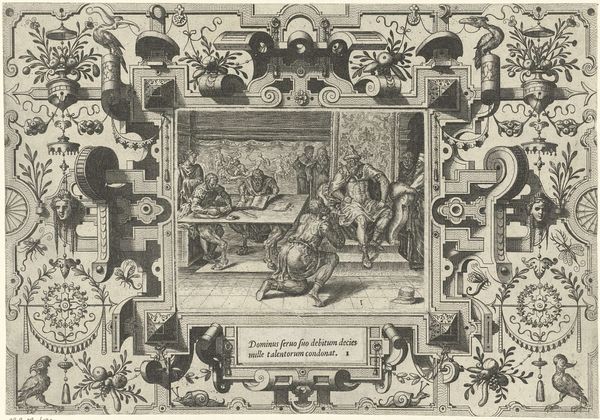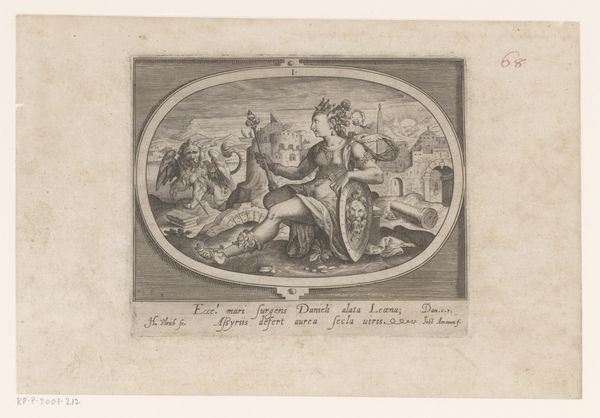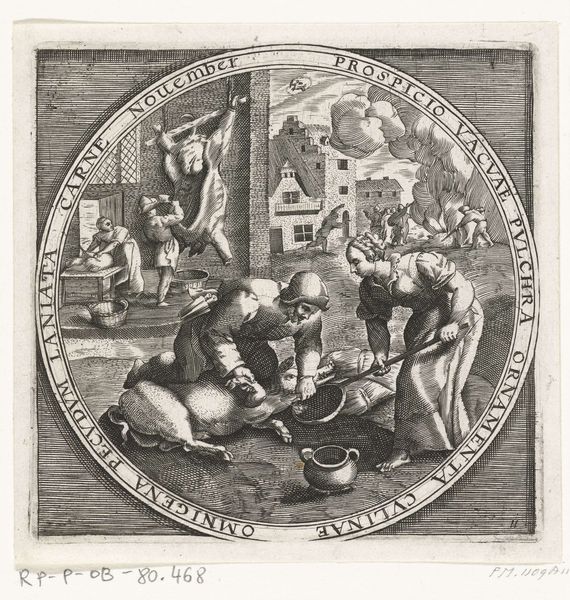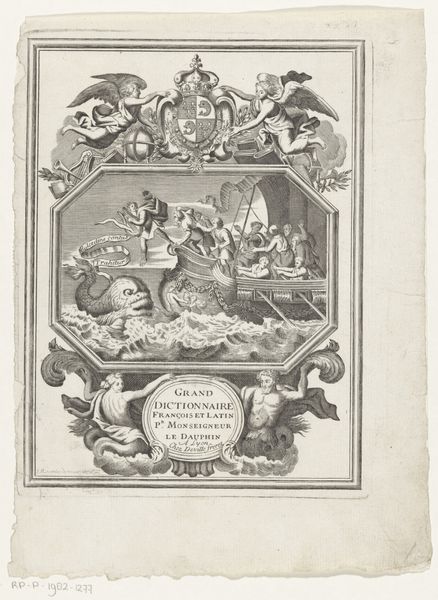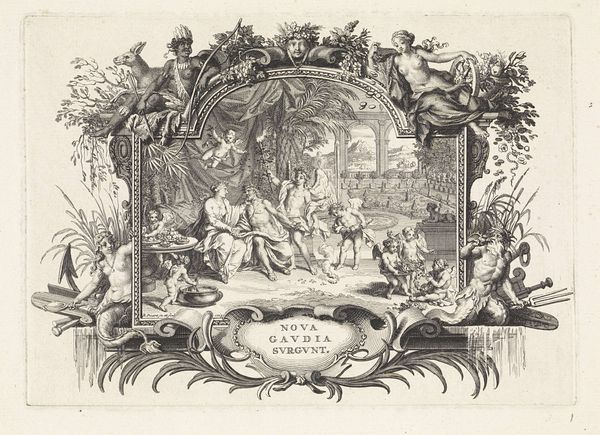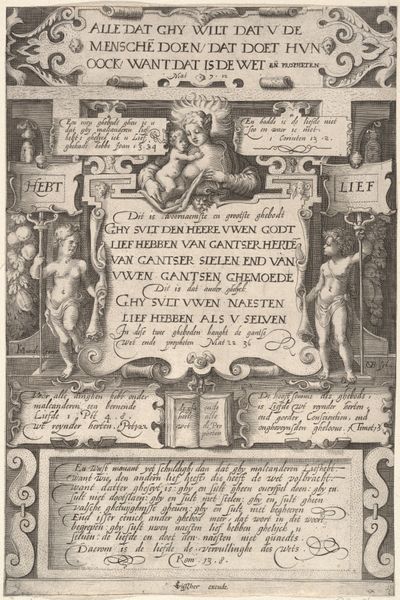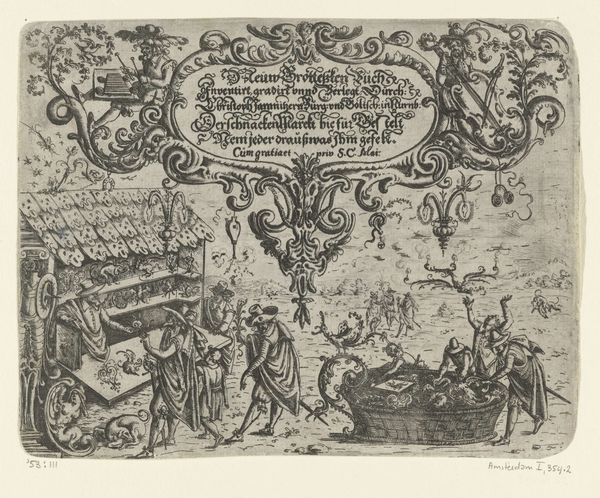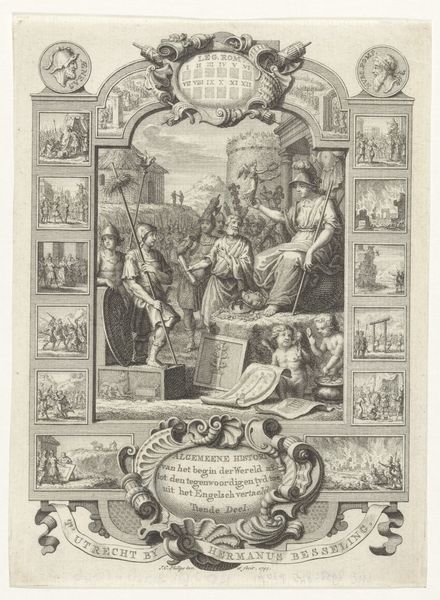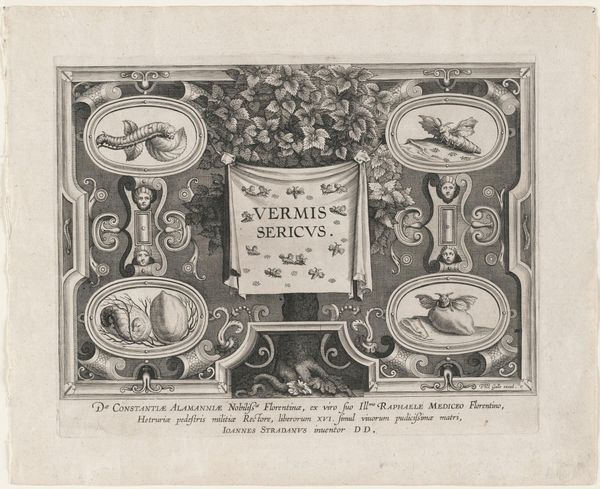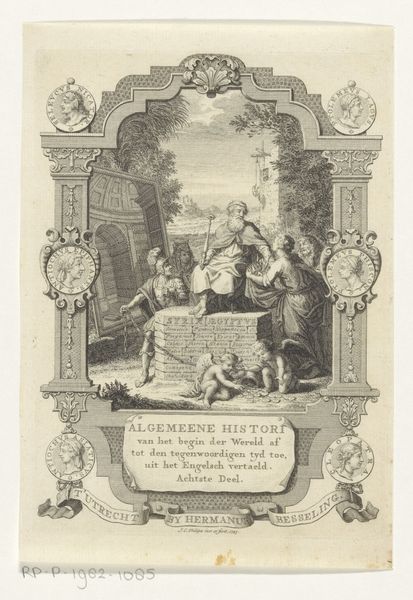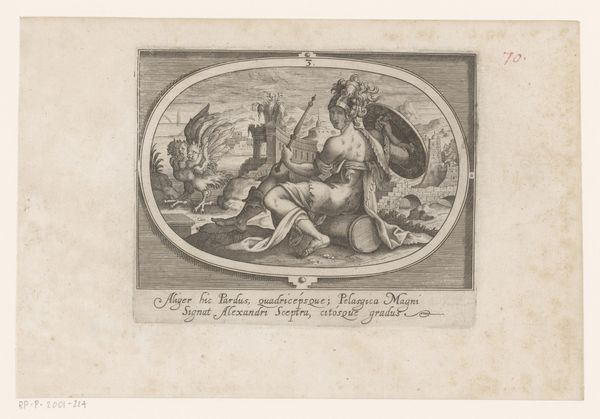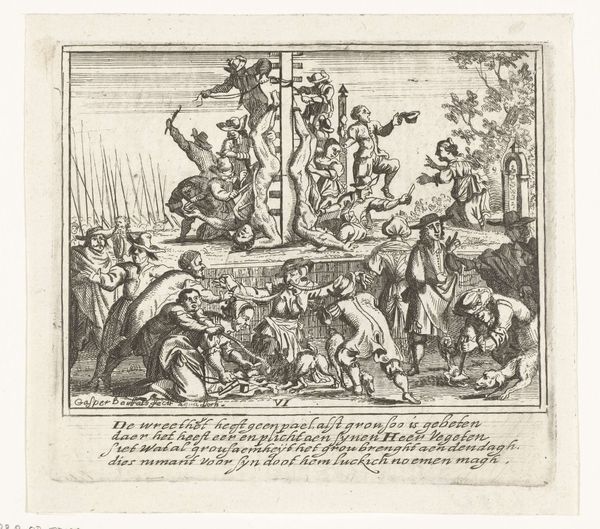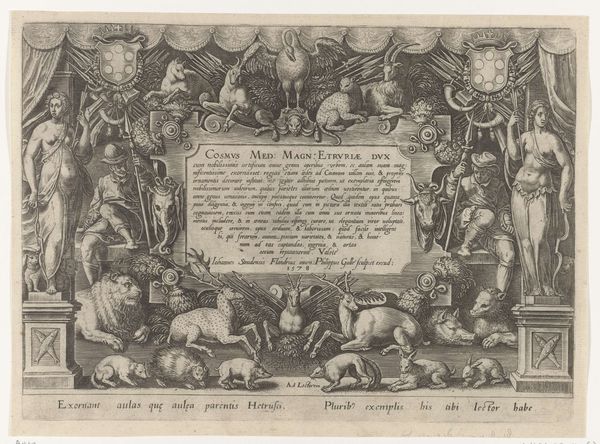
Titelprent voor een serie van de twaalf maanden van het jaar verbeeld in scènes uit het volksleven, ca. 1600 Possibly 1600 - 1675
0:00
0:00
drawing, print, engraving
#
drawing
#
medieval
#
allegory
#
pen drawing
# print
#
figuration
#
11_renaissance
#
line
#
islamic-art
#
history-painting
#
academic-art
#
engraving
Dimensions: height 115 mm, width 117 mm
Copyright: Rijks Museum: Open Domain
Curator: This engraving, "Titelprent voor een serie van de twaalf maanden van het jaar verbeeld in scènes uit het volksleven," possibly from between 1600 and 1675 by an anonymous artist, presents a really intriguing circular design filled with allegorical figures. The detail is remarkable, particularly considering it's an engraving. What strikes you most about it? Editor: It feels very much of its time – it's busy, intricate, and symbolic, almost like a scientific instrument. What does its circular form signify, and does it imply that time itself is a commodity? Curator: Absolutely. Look at the materials and processes involved: the metal plate, the tools used for engraving, the labour invested in creating such detail. How might the accessibility of these prints relate to the wider societal changes occurring at that time? Were these images affordable only for a specific class? Editor: I hadn’t considered the social impact so directly! The printing process and cost would definitely dictate who could own this image, controlling the narrative and perspective available. Curator: Exactly. Think about who controlled the means of production and distribution. This imagery likely reinforced their power. The classical figures would have suggested power and status. How did the ruling classes wish to depict time? Editor: That’s fascinating! It is an incredible blend of artistic skill and social statement. Viewing it through the lens of production and consumption unlocks new perspectives. Curator: Indeed. Analyzing art through its materiality allows us to understand better the socio-economic landscape and power dynamics of its creation. We move away from thinking about taste to ideas around value and labour.
Comments
No comments
Be the first to comment and join the conversation on the ultimate creative platform.
